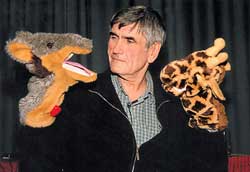Difference between revisions of "Nonviolent Communication"
Jump to navigation
Jump to search
(image) |
(hero images) |
||
| Line 13: | Line 13: | ||
NVC encourages people to avoid labelling others or imputing motives or feelings to them. Instead it recommends that people explore their own feelings and learn to express them without use of [[enemy images]] or judgments about others. | NVC encourages people to avoid labelling others or imputing motives or feelings to them. Instead it recommends that people explore their own feelings and learn to express them without use of [[enemy images]] or judgments about others. | ||
| − | == | + | ==Importance on Wikispooks== |
| − | Wikispooks aims to emulate NVC, by seeking to minimize the use of loaded language | + | Wikispooks aims to emulate NVC, by seeking to minimize the use of loaded language, including [[hero images]], but especially [[enemy images]].<ref>[[Wikispooks:Style Guide]]</ref> |
{{SMWDocs}} | {{SMWDocs}} | ||
==References== | ==References== | ||
{{reflist}} | {{reflist}} | ||
Revision as of 16:56, 27 March 2022
(technology, non-violence) | |
|---|---|
 Marshall Rosenberg uses hand puppets to explain NVC | |
| Start | 1960s |
| Founder(s) | Marshall Rosenberg |
| Abbreviation | NVC |
Nonviolent Communication (NVC) is a system of negotiation that was conceived by US psychologist Marshall Rosenberg.
Avoiding labels
NVC encourages people to avoid labelling others or imputing motives or feelings to them. Instead it recommends that people explore their own feelings and learn to express them without use of enemy images or judgments about others.
Importance on Wikispooks
Wikispooks aims to emulate NVC, by seeking to minimize the use of loaded language, including hero images, but especially enemy images.[1]
Many thanks to our Patrons who cover ~2/3 of our hosting bill. Please join them if you can.